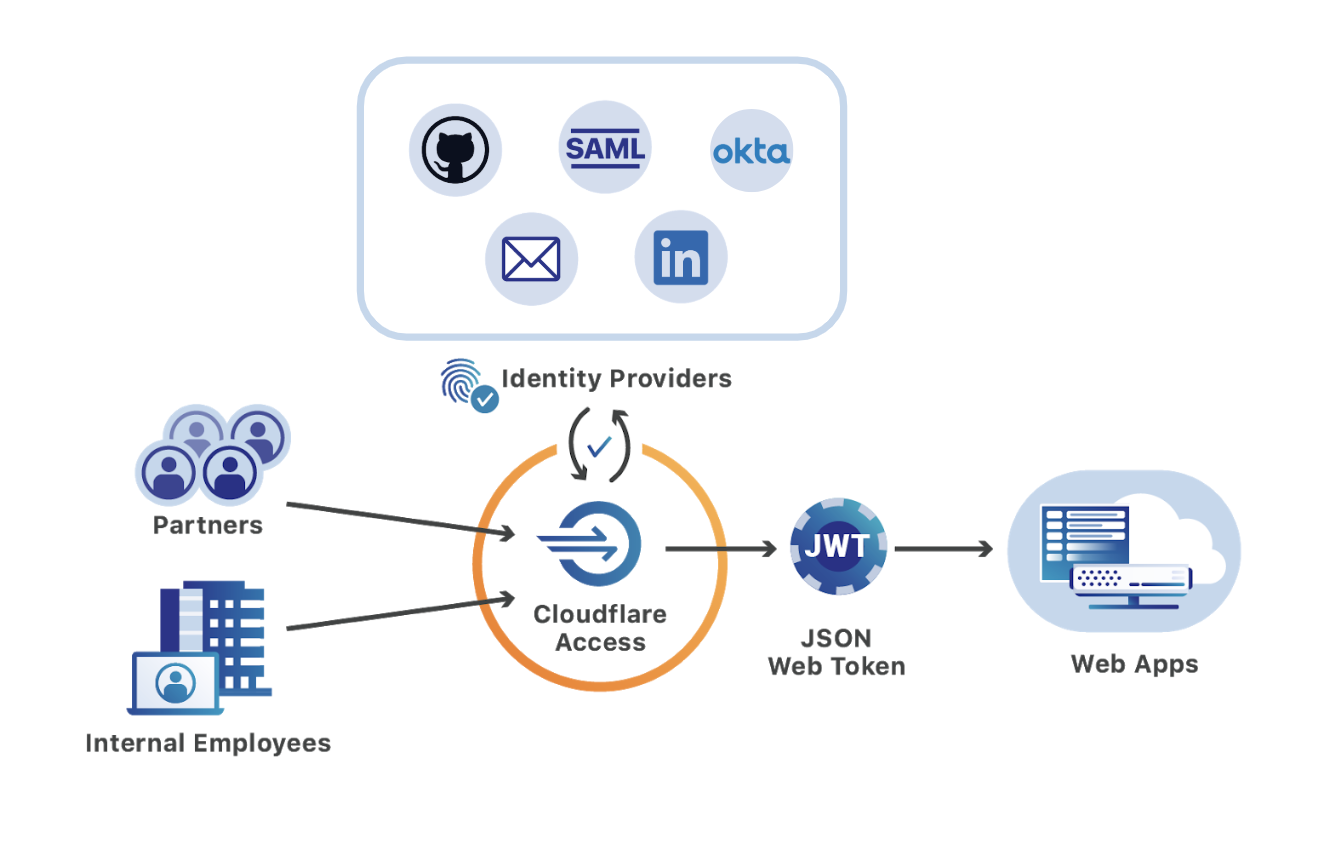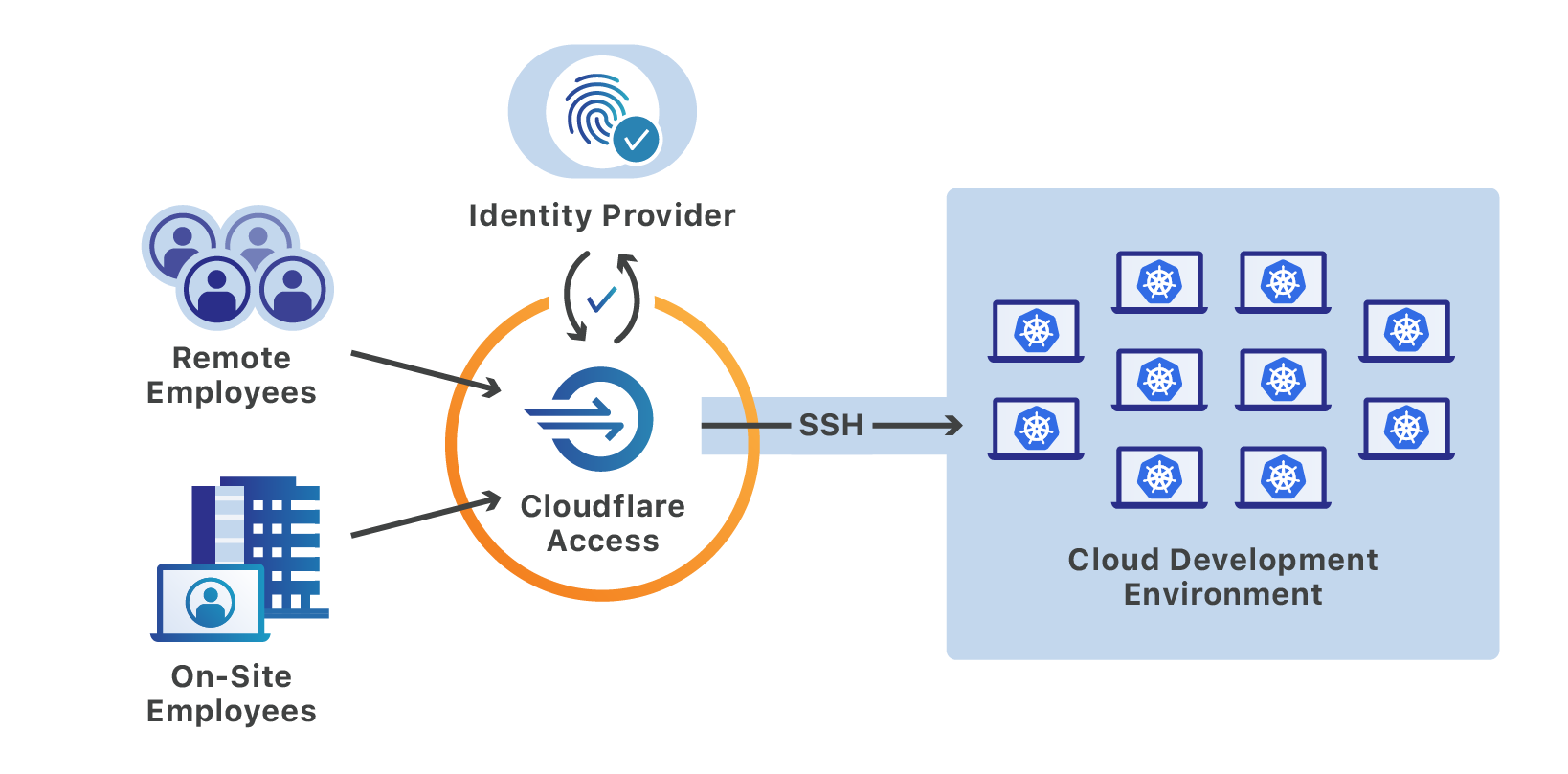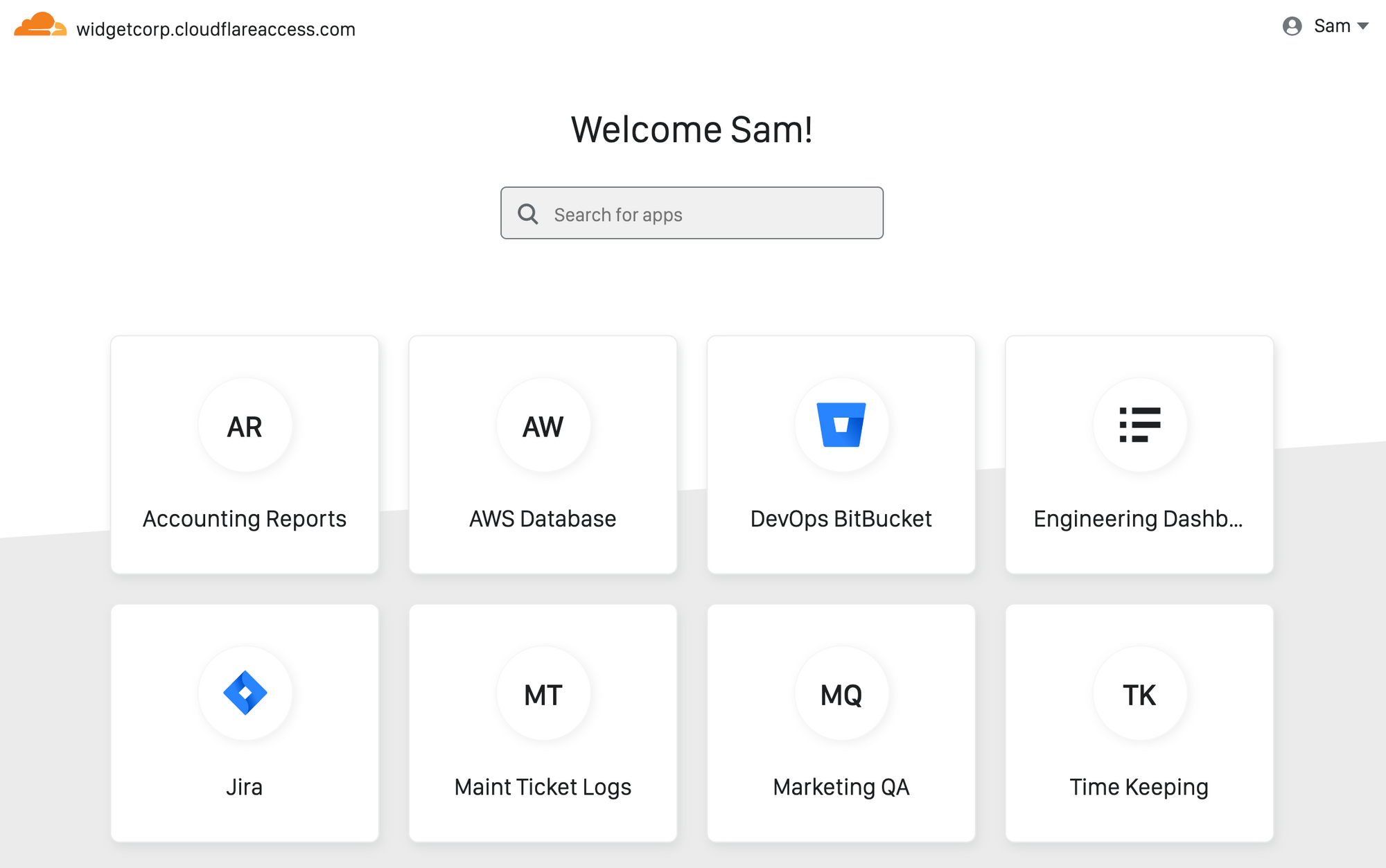The novel coronavirus is actively changing how organizations work in real-time. According to Fortune, the virus has led to the “world’s largest work-from-home experiment.” As the epidemic crosses borders, employees are staying home and putting new stress on how companies manage remote work.
This is only accelerating an existing trend, however. Remote work has gained real traction in the last decade and Gartner projects that it will only continue. However, teams which are moving to a distributed model tend to do so slowly. When those timelines are accelerated, IT and security administrators need to be able to help their workforce respond without disrupting their team members.
Cloudflare Access can help teams migrate to a model that makes it seamless for users to work from any location, or any device, without the need for lengthy migrations or onboarding sessions. Cloudflare Access can be deployed in less than one hour and bring SaaS-like convenience and speed to the self-hosted applications that previously lived behind a VPN.
Leaving the castle-and-moat
When users share a physical space, working on a private network is easy. Users do not need clunky VPN clients to connect to the resources they need. Team members physically sit close to the origin servers and code repositories that power their corporate apps.

In this castle-and-moat model, every team member is assumed to be trusted simply by their presence inside of the walls of the office. They can silently attempt to connect to any resource without any default checks. Administrators must build complex network segmentation to avoid breaches and logging is mostly absent.

This model has begun to fall apart for two reasons: the shift to cloud-hosted applications and the distribution of employees around the world.
The first trend, cloud-hosted applications, shifts resources outside of the castle-and-moat. Corporate apps no longer live in on-premise data centers but operate from centralized cloud providers. Those environments can sit hundreds or thousands of miles away from users, slowing down the connections to the applications hosted in those providers.
The second shift, users working outside of the office or from branch offices, introduces both a performance challenge in addition to a security concern. Organizations need to poke holes in their perimeter to allow users to connect back into their private network, before sending those users on to their target destination.
The spread of the coronavirus has accelerated the trend of users working away from home. Remote workers are putting new strain on the VPN appliances that sit in corporate headquarters, and that adds to the burden of IT teams attempting to manage a workplace shift that is happening much faster than planned.
Cloudflare Access
Cloudflare Access is one-half of Cloudflare for Teams, a security platform that runs on Cloudflare’s network and focuses on keeping users, devices, and data safe without compromising for performance. We built Cloudflare Access to solve our own headaches with private networks as we grew from a team concentrated in a single office to a globally distributed organization.
Cloudflare Access replaces corporate VPNs with Cloudflare’s network. Instead of placing internal tools on a private network, teams deploy them in any environment, including hybrid or multi-cloud models, and secure them consistently with Cloudflare’s network.
Administrators build rules to decide who should be able to reach the tools protected by Access. In turn, when users need to connect to those tools, they are prompted to authenticate with their team’s identity provider. Cloudflare Access checks their login against the list of allowed users and, if permitted, allows the request to proceed.

Deploying Access does not require exposing new holes in corporate firewalls. Teams connect their resources through a secure outbound connection, Argo Tunnel, which runs in your infrastructure to connect the applications and machines to Cloudflare. That tunnel makes outbound-only calls to the Cloudflare network and organizations can replace complex firewall rules with just one: disable all inbound connections.
To defend against attackers addressing IPs directly, Argo Tunnel can help secure the interface and force outbound requests through Cloudflare Access. With Argo Tunnel, and firewall rules preventing inbound traffic, no request can reach those IPs without first hitting Cloudflare, where Access can evaluate the request for authentication.
Administrators then build rules to decide who should authenticate to and reach the tools protected by Access. Whether those resources are virtual machines powering business operations or internal web applications, like Jira or iManage, when a user needs to connect, they pass through Cloudflare first.
When users need to connect to the tools behind Access, they are prompted to authenticate with their team’s SSO and, if valid, instantly connected to the application without being slowed down. Internally managed apps suddenly feel like SaaS products, and the login experience is seamless and familiar.
Behind the scenes, every request made to those internal tools hits Cloudflare first where we enforce identity-based policies. Access evaluates and logs every request to those apps for identity, giving administrators more visibility and security than a traditional VPN.
Work from any device
The coronavirus is not only changing where employees work, but also the devices they use to do their work. Digitimes reports that the demand for tablets continues to grow as workers find alternatives to the desktops sitting in corporate offices, a trend they attribute to the rise in cases of coronavirus and increasing percentages of employees working outside of the office.
Tablets and other mobile devices introduce new challenges for teams. Users need to install and configure a VPN profile to connect, if they can connect at all.
Cloudflare Access offers an alternative that requires no user action or IT administration. End users can login and reach their corporate apps from any device, no client or agent required.
Rapid remote development
Working remotely can be difficult for users doing their job on browser-based applications. It becomes much more difficult for engineers and developers who need to do their work over RDP or SSH.
In the event that teams need to connect to the desktops back inside of the office, Access also supports RDP connections. Team members can reach desktops over Cloudflare’s global network, reducing the latency of traditional VPN-based RDP clients. Organizations do not need to deploy new credentials or run the risk of leaving remote desktops open to the Internet. Cloudflare Access integrates with a team’s identity provider to bring SSO login to remote desktops.
Cloudflare Access also includes support for native SSH workflows. With Access, developers and engineers can connect over SSH to the code repositories or build systems they need to stay productive. Users can connect remotely, from low-end devices, to powerful servers and machines hosted in cloud environments.

Additionally, with the SSH feature in Cloudflare Access, organizations can replace the static SSH keys that live on user devices with short-lived certificates generated when a user logs in to Okta, AzureAD, or any other supported identity provider. If team members working from home are using personal devices, organizations can prevent those devices from ever storing long-lived keys that can reach production systems or code repositories.
Replicated is an infrastructure software company that uses Cloudflare Access to embrace remote development work. Their team of developers is spread out across the continental US. Before they found Cloudflare Access, IT provisioned new MacBook pros to each member of their development team. Every developer deployed the entire development stack on their local machine. Users were spending hours every week just setting up their development environment, and even more time troubleshooting their setup. They use Cloudflare Access and Argo Tunnel to secure developer access to their Google Cloud Platform (GCP) infrastructure. Everything is authenticated by Access and proxied over Argo through SSH. Now, Replicated’s team of developers can work safely from coffee shops and home offices without running code locally on their machines.
One-click logging and compliance
When users leave the office, security teams can lose a real layer of a defense-in-depth strategy. Employees do not badge into a front desk when they work remotely.
Cloudflare Access addresses remote work blindspots by adding additional visibility into how applications are used. Access logs every authentication event and, if enabled, every user request made to a resource protected by the platform. Administrators can capture every request and attribute it to a user and IP address without any code changes. Cloudflare Access can help teams meet compliance and regulatory requirements for distributed users without any additional development time.
Onboard users without onboarding sessions
When IT departments change how users do their work, even to faster and safer models, those shifts can still require teams to invest time in training employees. Discoverability becomes a real problem. If users cannot find the applications they need, teams lose the benefit of faster connections and maintenance overhead.
Cloudflare Access includes an application launchpad , available to every user with additional configuration. With the Access App Launch, administrators can also skip sending custom emails or lists of links to new contractors and replace them with a single URL. When external users login with LinkedIn, GitHub, or any other provider, the Access App Launch will display only the applications they can reach. In a single view, users can find and launch the tools that they need.
Whether those users are employees or contractors and partners, every team member can quickly find the tools they need to avoid losing a step as they shift from working on a private network to a model built on Cloudflare’s global network.

How to get started
It’s really very simple. To find out more about Cloudflare for Teams, visit teams.cloudflare.com.
If you’re looking to get started with Cloudflare Access today, it’s available on any Cloudflare plan. The first five seats are free. Follow the link here to get started.
Finally, need help in getting it up? A quick start guide is available here.

